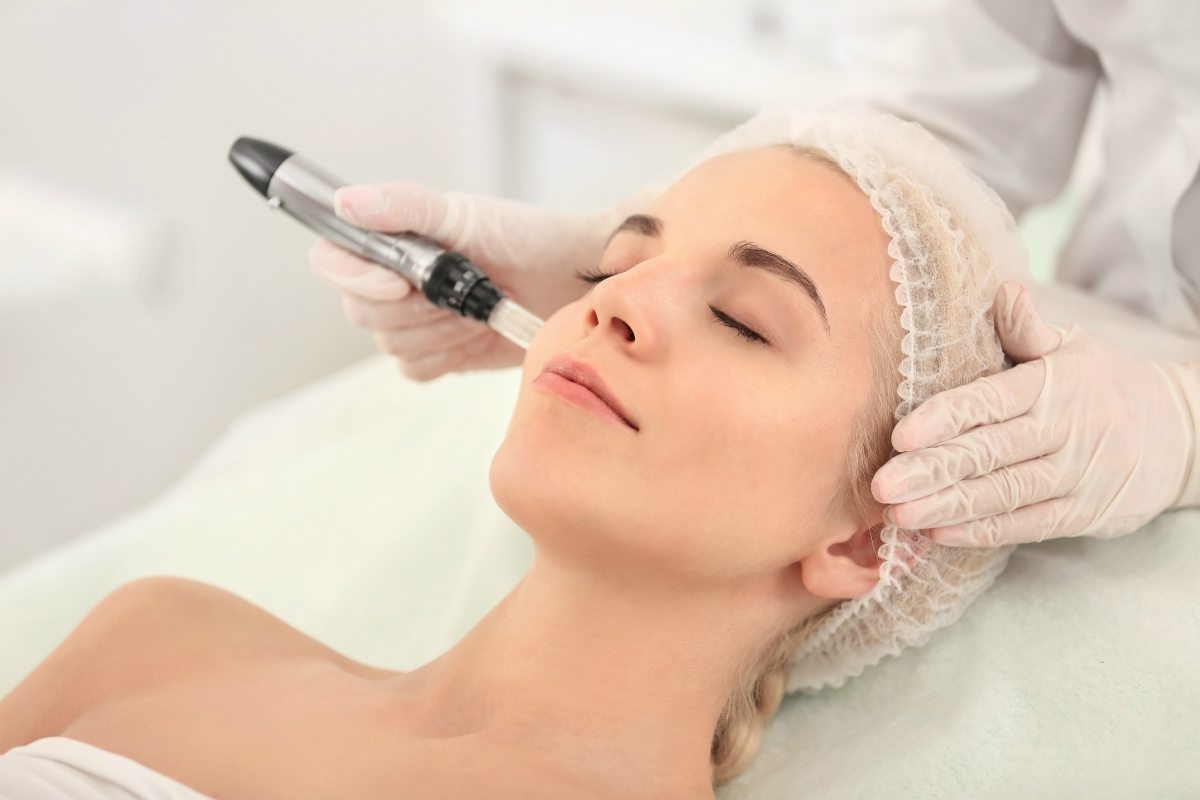Microneedling

Collagen Induction Therapy
Microneedling is a minimally invasive cosmetic procedure that’s used to treat skin concerns via collagen production. Also known as collagen induction therapy, this treatment may help those looking to reduce the appearance of acne scars and stretch marks.
It’s also used in certain anti-aging procedures, such as eyelid surgery and sun spots. Microneedling isn’t effective for hair loss, despite the possible role of collagen in hair growth.
You may be an ideal candidate for this procedure if you’re in good health and have certain skin concerns that haven’t responded to home treatments or other types of dermatologic procedures, such as peels.
Fast Facts
- Microneedling is a dermaroller procedure that uses small needles to prick the skin.
- The purpose of treatment is to generate new collagen and skin tissue for smoother, firmer, more toned skin.
- Microneedling is mostly used on the face and may treat various scars, wrinkles, and large pores.
Safety:
- Microneedling is minimally invasive, requiring no downtime.
- It’s considered safe for most people who are in overall good health.
- The procedure isn’t safe for people who use certain acne medications or for women who are pregnant.
- You’ll experience minor redness and irritation for a few days after the procedure
How does microneedling work?
Microneedling works by encouraging your skin to make more collagen. The idea is that pinpricks from the procedure cause slight injury to the skin and that the skin responds by making new collagen-rich tissue.This new skin tissue is, in turn, more even in tone and texture. It’s normal for the skin to lose collagen via age or injury. By encouraging the skin to make new tissue, there may be more collagen to help make the skin firmer, too.
Procedure for microneedling
During the procedure, your doctor makes small pricks under the skin with a pen-like tool. The pinpricks are so small that you likely won’t notice them after the procedure. Your doctor will move the tool evenly across your skin so that the new skin that rejuvenates will be even, too.
Before getting started, your doctor will use a topical anesthetic to reduce the chances of pain. This is done about an hour before your treatment.
Are there any risks or side effects?
Like all cosmetic procedures, microneedling isn’t without risk. The most common side effect is minor skin irritation immediately following the procedure. You may also see redness for a few days. Call your doctor if you notice more severe side effects, such as:
- bleeding
- bruising
- infection
- peeling
You may not be an ideal candidate for microneedling if you:
- are pregnant
- have certain skin diseases, such as psoriasis or eczema
- have open wounds
- have had radiation therapy recently
- have a history of skin scars
What to expect after microneedling?
Microneedling isn’t invasive like plastic surgery, so the recovery time is minimal.
You may notice skin irritation and redness within the first few days following the procedure. This is a natural response to the small “injuries” made by the needles in your skin.
You can go back to work or school after the procedure if you’re comfortable. Some people apply camouflaging makeup during the first few days as the redness dissipates.
Your skin will also be more sensitive to the sun, so sunscreen is a must.
After microneedling, your skin works fairly quickly to rejuvenate new tissue. In theory, you should see results within a couple of weeks.
To maintain the results of your treatment, you’ll need multiple sessions and perhaps other complementing treatments.
